By Paul BJ Ransbury, CEO at Aviation Performance Solutions (APS)
Summary
Advanced flight simulators will play a key role in reducing the risk of loss of control in-flight as the industry looks to the future. This article looks at some of the interesting advancements being made to help the simulator instructor be more capable in the effective delivery of upset prevention and recovery training (UPRT). Improved visual displays, enhanced instructor cuing and valid training envelope monitoring improvements allow less experienced instructors to give more accurate training value to the pilots they train. This article addresses UPRT- specific technology advances in airline upset training.
Originally published in Skies Magazine
Overview Video
A longer video is available at the end of the White Paper below.
White Paper: Technology in Airline Jet Upset Training
Download: Skies Magazine Article – Technology in Airline Jet Upset Training
Introduction
The airline industry has demonstrated its seemingly insatiable propensity to embrace technology at an ever-increasing rate. From improved structural design, to enhanced efficiency, monitoring and maintainability, to advanced integration of technologies in the cockpit, today’s modern airliners are technological marvels.
Loss of Control In-flight (LOC-I) is the leading causal factor of fatalities in commercial aviation over the past ten years (Figure 1) and has been a leading contributor to airline crashes from the beginning of commercial aviation in the early 1950s.
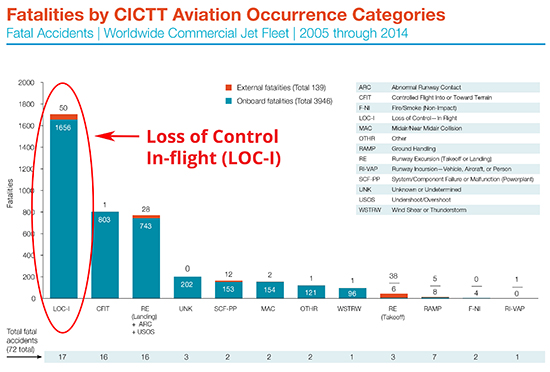 Figure 1: Fatal Accidents – Worldwide Commercial Jet Fleet – 2004 through 2013
Figure 1: Fatal Accidents – Worldwide Commercial Jet Fleet – 2004 through 2013
Colgan 3407 in February 2009 brought LOC-I to the attention of the United States Congress with such force it resulted in Public Law 111-216 mandating air carriers address LOC-I through the integration of stall and upset recognition and recovery training. In a joint effort by the Federal Aviation Administration (FAA) and the International Civil Aviation Authority (ICAO), similar training is being instituted by the year 2019 in nearly 200 countries around the world beginning as early as the commercial licensing level. Comprehensive Upset Prevention and Recovery Training (UPRT) addresses several levels of mitigation to include enhancements in awareness, recognition, prevention and recovery from ‘airplane upsets’. Airplane upsets are situations that ultimately lead to fatal LOC-I accidents. These events propelled the creation of ICAO Doc 10011 – Manual on Aeroplane Upset Prevention and Recovery Training (ICAO UPRT Manual), published in early 2014.
Unfortunately, there does not appear to be any fail-safe technological solutions to LOC-I that can be integrated into flight control technologies, autopilots and envelope protections in the foreseeable future. The pilot remains the ultimate safety valve if technology fails in most LOC-I situations. As we shall regrettably see, pilots lack the robust skills necessary to overcome airplane upset events beyond certain thresholds. These factors, including flight control technology limitations and deficient pilot capability, are evidenced by several tragedies involving state-of-the-art airliners with advanced flight envelope protection systems designed to prohibit the possibility of an airliner being stalled or flown beyond certain pitch attitudes and bank angles. Tragically, Air France 447 (June 2009) and AirAsia 8501 (March 2015) accidents involving modern Airbus A330 and A320 models respectively, both allegedly stalled and remained in a predominantly out of control condition until impact killing all onboard.
Technology Enhancements
One of the major challenges in addressing fatal LOC-I accidents is that the unfavorable precursor conditions ultimately causing airplane upsets are diverse, subtle, often insidious and sometimes masked with distracting combinations of visual alerts, audio warnings, motion cues and unusual airplane performance characteristics that the pilot has never experienced before. The complexity of the LOC-I threat is generally underappreciated. It is not uncommon for well-meaning pilots, instructors and aviation experts to try to pinpoint a single root cause leading to airplane upsets that, if eliminated, would solve the majority of loss of control in-flight accidents. Examples of attributable root cause factors include distraction, automation mismanagement, technique improvement, spatial disorientation, manual handling or specific factors such as wake turbulence and inadvertent IFR among many others. Certainly the aviation community must continue to address all potential root causes to improve air safety and it will. In fact, the community has been addressing the above-mentioned factors and a host of others for decades. If we think of the diversity of the dozens upon dozens of possible ‘root causes to LOC-I’ as small holes in the bottom of a bucket, one begins to wonder if we can ever find enough plugs to stop all the leaks. Then, assuming we succeed, will these plugs last in the long term, under the stress of an upset event or even be effective at all when put to the test. Do we need to improve training to plug these leaks? Absolutely, without question. However, stopping here (upset prevention) would be reckless given the undeniable data-driven evidence that airplane upsets will occur and are often catastrophic. An escalated airplane upset quickly develops beyond the scope of modern licensing training, pilot experience and instructor experience. This is where several unique forms of technology can help us step into the future in a manner that will push air safety to a new level if done properly.
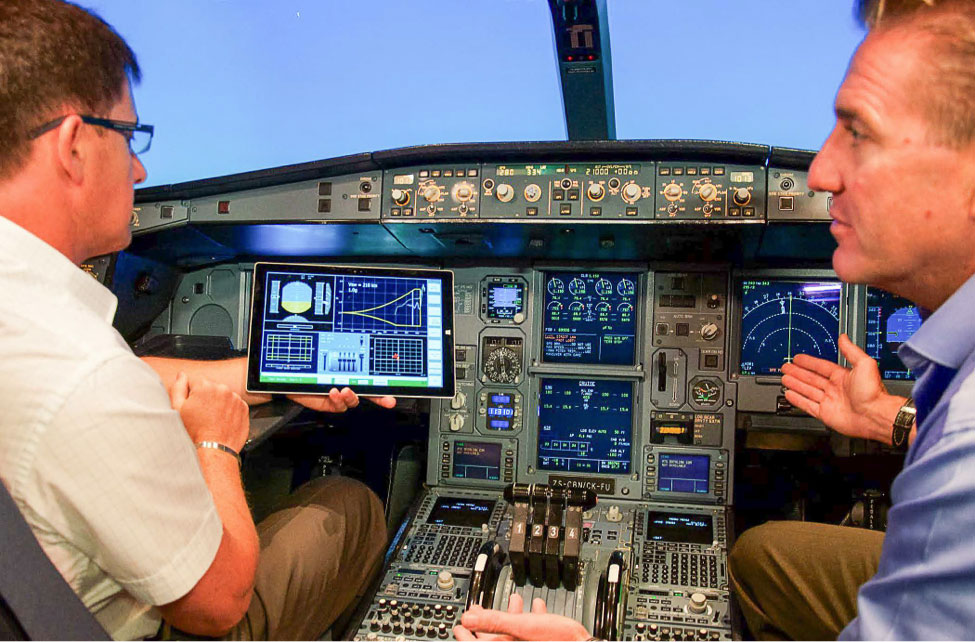
Figure 2: Airline Instructor, Brad Bennetts at South African Airways, Using the IDT Instructor Operating Station Tablet during UPRT in an Airbus A340 (photo courtesy of International Development of Technology)
There is one inescapable fact – no matter how an airplane upset is generated to exceed certain parameters of angle of attack, pitch and/or bank; once an airplane upset happens in the real world, the cause of the upset doesn’t matter. The reason for this is – in the real world with hundreds of real people on board, which may include our family, friends, and children – if an airplane gets into a full aerodynamic stall and/or is upset beyond just 60 degrees of bank and/or 30 degrees of pitch, pilots and instructors alike have very little experience in those time-critical, life-threatening regimes. Furthermore efficient recovery actions are often counter-intuitive and an untrained pilot may be unable to respond in a safe and timely manner.
Why Do We Need Help?
Given the comments above, a valid question might be: how do instructors effectively teach in regions of the flight envelope where they have little to no training? Simply put – they don’t – not without getting proper training in UPRT. The ICAO UPRT Manual states, “A comprehensive UPRT programme encompasses the entire operating envelope of commercial aeroplanes … an essential component in the effective delivery of UPRT is a properly trained and qualified instructor who possesses sound theoretical and operational knowledge relevant to the UPRT content” (p. 5-1). If instructors don’t receive proper training, the skills and techniques they teach in regions that they have little knowledge of can be dangerous and potentially catastrophic. It’s better for an airline to provide no UPRT at all than it is to deliver incorrect UPRT.
There are numerous aspects of UPRT that are beyond the experience, knowledge and skill sets of most pilots and instructors. Those aspects include psychophysiological factors, advanced stall conditions, attitude parameters that exceed typical pilot experience, effective all-attitude handling techniques, effective crew resource management practices in an upset event and many more. Let’s look at just one example: “attitude parameters that exceed pilot experience”. Developed airplane upset events almost always exceeds 30 degrees of pitch and/or 60 degrees of bank. Let’s look at that situation a little closer.
Figure 3: Training and Operational Flight Envelopes
In Figure 3, the Red Zone represents 100% of the all-attitude environment – that is, all combinations of pitch and bank any airplane can achieve on any flight. The Normal Flight region is bounded by the definition of an airplane upset in accordance with the Airplane Upset Recovery Training Aid and represents just 5% of all-attitude environment. It is in the Normal Flight region where pilots spend the vast majority of their career where they must ‘prevent’ an airplane upset from developing by using all their available handling, airmanship, monitoring and situational awareness tools, knowledge and skills. Notice the limits of Commercial Licensing Training. This represents the small window within which pilots today must “recover” from an airplane upset due to current training limitations. The remaining 90% of the all-attitude environment is not addressed by today’s licensing training yet nearly every fatal airplane upset leading to LOC-I ends up in this region at some point. Moreover, in approximately 80% of loss of control in-flight situations, there is nothing mechanically wrong with the airplane – meaning, a pilot properly trained to address flight conditions in the Red Zone would be able to recover assuming sufficient time and altitude are available to do so. In most cases, both time and altitude are available – especially for a UPRT-training pilot.
The problem the industry is facing today is that we are asking pilots to develop capability in the Red Zone, yet the industry itself largely does not have the knowledge, skill and experience to do so. It would be another matter if the skills developed within the Commercial Licensing Training limits transferred to the Red Zone but they don’t. The skills necessary to resolve flight conditions that have evolved into the Red Zone are often counter intuitive. This is where commercial licensing training ends and comprehensive UPRT takes over. Keep in mind, the above example situation of “attitude parameters that exceed pilot experience” is just one aspect of managing the risk of LOC-I that are beyond the experience, knowledge and skill sets of today’s pilots and instructors.
Role of Technology
Let’s focus specifically on delivering Upset Prevention & Recovery Training (UPRT) in today’s highly advanced airline community. In this discussion, we are going to focus on just two technological enhancements available to the airline community right now to take significant effective steps toward integrating recommended UPRT: 1) instructor operating station technology, and 2) standardized pilot knowledge applications.
1. Instructor Operating Station (IOS) Technology
Simulators have limitations in what they effectively can do when it comes to UPRT. However, for the regimes of flight within their fidelity envelope, called the Valid Training Envelope (VTE), simulators are remarkable tools that potentially offer tremendous value in the hands of a qualified UPRT instructor. An important forthcoming advancement in simulator technology concerning UPRT is in enhancements for the simulator’s Instructor Operating Station (IOS) that, when combined with comprehensive instructor UPRT training, will give simulator instructors better insight into what’s happening during UPRT training sessions. The ICAO UPRT Manual states, “Instructors should have available, and be trained to effectively utilize, IOS tools that convey:
A. When the simulator model is no longer valid;
B. When the aeroplane operational envelope has been exceeded; and
C. When inappropriate control inputs have been made.” (p. 4-3)
Figure 4 shows a combined plot of enhancements to the Instructor Operating Station of a CAE Level D simulator in Montreal, Quebec that embraces the technological enhancements recommended by ICAO and the FAA’s National Simulator Program in the delivery of UPRT.
Figure 4: Screenshot of the CAE Instructor Operating Station Enhancement Meeting ICAO UPRT Manual Recommendations (Courtesy of CAE, Inc.)
Let’s have a look each of these individually using plots from CAE, Inc. simulator station technology that has been developed to address these global aviation industry needs. In the bottom right corner of Figure 4, the instructor can view a duplication of the primary flight display presented at the IOS station to help correlate the evolving flight condition with the pilot’s control inputs (bottom left) and the aerodynamic details of the flight condition (top two instruments) both in real time and during playback.
A. Simulator No Longer Valid
For simulator training to accurately relate to the performance and handling of the modeled airplane, the simulator must, as mentioned earlier, be operated within the VTE. For the purposes of this discussion, as depicted in Figure 5 the quality of the aeromodel fidelity can be measured by plotting values of angle of attack (Alpha) and the sideslip angle (Beta) in relation to the simulators’ sources of aeromodel data drawn from test flights, wind tunnel testing and mathematical extrapolation. In simple generalized terms, the angle of attack represents angular difference in the pitch axis between the direction the wing is pointing and the direction the wing is going through the air. Similarly, the sideslip angle is the angular difference in the yaw axis between the direction the fuselage, or nose of the airplane, is pointing and the direction the fuselage is going through the air. In Figure 5, it can be seen that the maneuver flown generates combinations of Alpha and Beta values that exceed the Flight Test data (the inner solid airplane-like shaped line) yet remain well within the Wind Tunnel data. As an instructor analysing the maneuver, it could be reasonably concluded that the performance of the simulator during that maneuver or exercise was at least representative of how the actual airplane would perform in an identical situation. The highest level of fidelity is achieved when the plots of the maneuver being assessed are within the Flight Test data. It is important to note, that the Alpha vs. Beta plot does not indicate the effectiveness of the control inputs or validity of the techniques being used. In fact, it doesn’t even indicate that maneuver performed was safe or effective. Without referencing other information, this plot only indicates the fidelity of the maneuver; in other words, how accurate was the simulator in representing the performance of the airplane being modeled.
Figure 5: Angle of Attack (Alpha) vs. Sideslip Angle (Beta) Plot (Courtesy of CAE, Inc.)
B. Aeroplane Envelope Exceeded
Generally speaking, the envelope of the airplane are, for the purposes of the UPRT IOS tool, preferred operational boundaries of the airplane by the manufacturer. In Figure 6, those limits can be speed, angle of attack or g-loading. Although there are other limitations to consider in UPRT, the V-N diagram shown in Figure 6 gives the instructor insight into the margins of safety of a particular maneuver in relation to these established operational boundaries. V represents speed or velocity and N represents the load factor on the aircraft. In Figure 6, we can see that the airplane started the maneuver at approximately 250 kts, or position “2” indicated in the figure. The pilot then unloaded the airplane as the airspeed slowed to ~70 knots, about half of the clean 1-G stall speed (~140 kts), but subsequently mismanaged the g-load causing a stall represented by the red dots on in Figures 5 and 6. This is not an uncommon plot for a problematic nose-high upset recovery, especially in a transport category airplane. If you refer back to Figure 3, you’ll see that is the initial condition – approximately 50 degrees nose up, 250 knots and a load of approximately 2.4 G on the airplane – as the exercise begins. Referring to the IOS recording of the event, the instructor can help the pilot understand why managing angle of attack (AOA) and G loading is especially important to maintaining a margin of safety from the stall in low speed airplane upset conditions. The graphic assists the pilot in training to understand the instruction given by the instructor.
Figure 6: Speed (V) vs. Load Factor (N) Plot (Courtesy of CAE, Inc.)
C. Inappropriate Control Inputs
A more difficult and subjective area of UPRT to be assessed by the instructor is the inappropriate control inputs made by the pilot during upset prevention and recovery exercises or scenarios. From aft cockpit seating position of the simulator, the instructor often has difficulty seeing the controls and being able to visually evaluate the magnitude and combination of controls being applied. Figure 7, shows primary and secondary control positions in real-time as the maneuver is being performed. The instructor can either watch the control position display as the event happens or review the control positioning after the maneuver by scrolling through the event and watch the controls move on the IOS device.
Figure 7: Flight Control Positioning and Status Display (Courtesy of CAE, Inc.)
Not shown in expanded detail here, the color coding of the various data plots vary in color from green to amber to red to magenta to indicate boundaries being approached and/or exceeded among other important performance or safety-relevant factors. The instructor station flags and displays these color coded attention items for the instructor to debrief with the crew at the completion of the exercise.
2. Standardized Pilot Knowledge Applications
When it comes to UPRT, there is a lot of misinformation in the aviation community. Modern airline pilots must be standardized using industry-vetted information. In fact, correct information in this delicate domain is of such great importance, that an airline must ensure the information is reviewed and understood. Modern application technologies on computers, tablets and even phones specific to UPRT today are excellent tools at helping training managers ensure their pilots learn and comprehend the critical information needed for UPRT.
Figure 8 shows an iPad App that integrates the Airplane Upset Recovery Training Aid content and presents it in a modular, self-paced and evaluated format. User activities and results can be optionally reported to the air carrier but, most importantly, the app allows pilots to properly prepare for dedicated UPRT simulator training. UPRT modules can be released all at once or released periodically to align with established recurrency training schedule.
Figure 8: iPad-based Training App Specific to Airline UPRT (Courtesy of Aviation Performance Solutions)
The Future
Airline travel is exceptionally safe – in fact, airlines around the world offer the safest mode of travel available today. However, nearly 50% of all fatalities in commercial aviation are due to Loss of Control In-flight (LOC-I). In response in large part to public demands for increased air safety to United States Congress, the aviation industry has decided to do something about it. Technology can help as long as it is used correctly and in a manner that reduces the risk of LOC-I. As the aviation industry begins to recognize the inherent lack of knowledge and instructional ability of today’s pilots to effectively implement UPRT, advanced simulation technology and improved learning applications available today offer a genuine opportunity for the industry to significantly reduce the prevalence of LOC-I. We must take these steps cautiously and correctly. Let’s not forget – it would better to do nothing at all concerning LOC-I than to implement solutions incorrectly or without due regard to the critical importance of human beings (pilots and instructors) in overcoming this severe and leading threat to air safety.
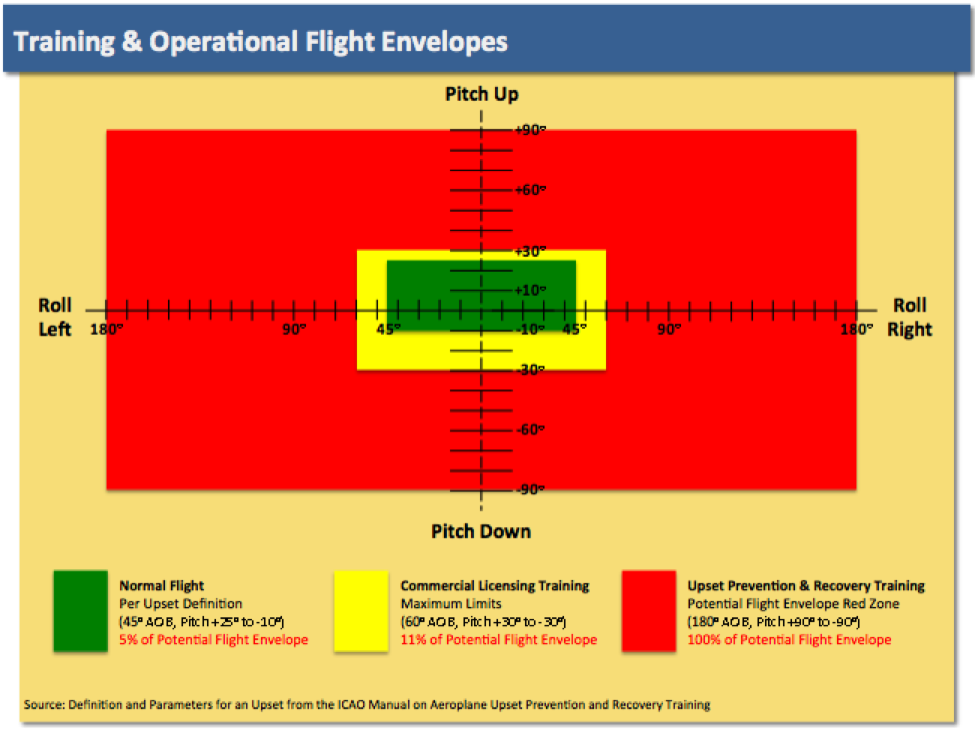
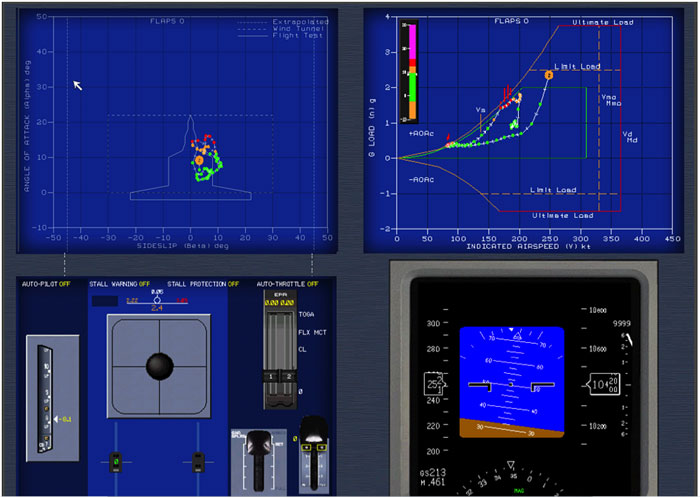
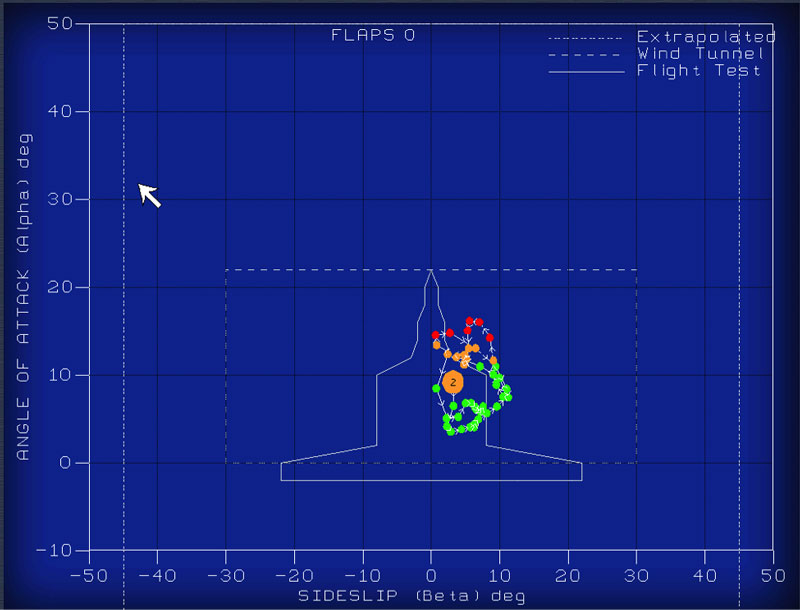
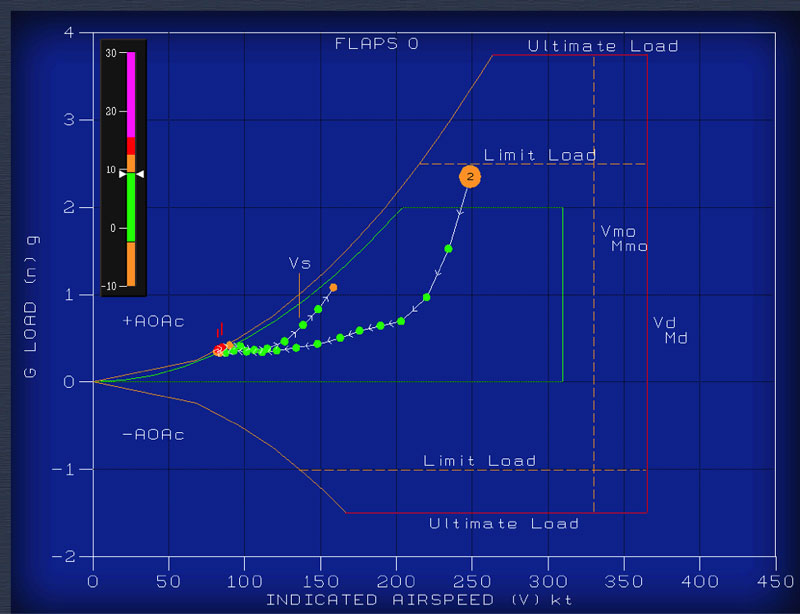
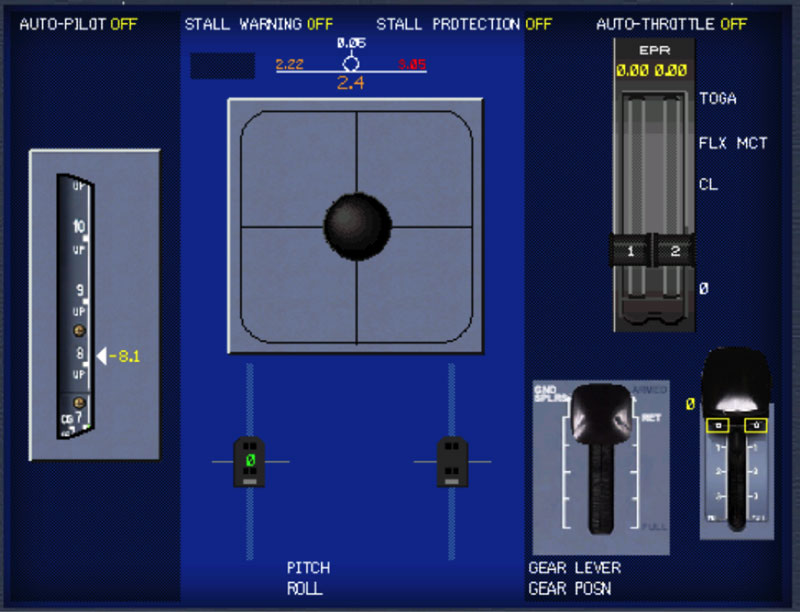
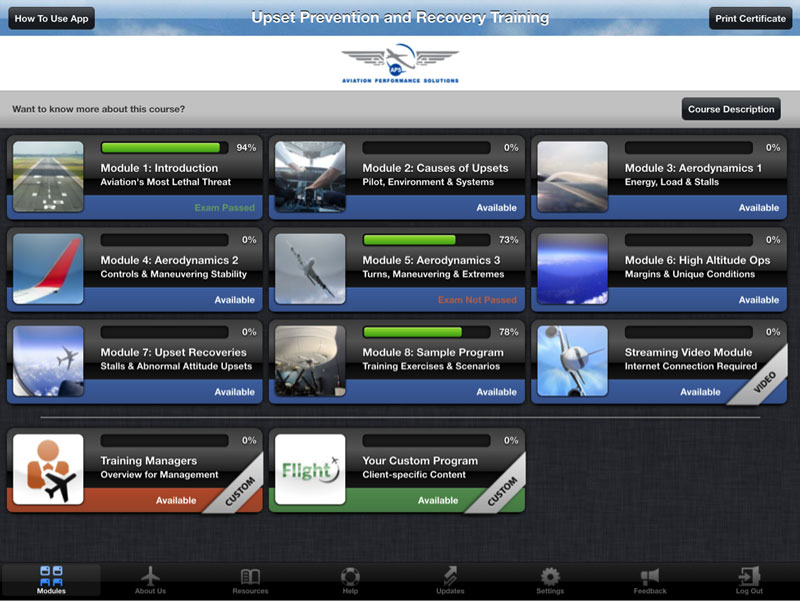




My dear friends at APS,
I feel honoured that all my 3 UPRT sessions has been conducted at your facilities and I had the pleasure to meet most of you in person.
Allow me to provide a small input to why, in my opinion, pilots are trained in UPRT. Prevention and recovery remain of paramount importance however what I feel is still missing in the IOS tool box is a form of FDM read out. Flight crew engaged in commercial transport, have the responsibility to ACT in a way so as to minimise the resultant effects of an upset and thus reduce the collateral damage to aircraft and occupants brought about by this phenomenon. I have personally witnessed the instinctive REACTION of pilots in FSTD who, despite the adequate training, are caught unaware by an upset. Rather than curbing their autonomic survival instinct they ‘play’ to its tune and start pushing on the side stick inducing unnecessary ‘g’ forces. Final result … cabin occupants are injured.
An FDM read out for the manoeuvre would surely go a long away. After this is the language of the Safety Officer, FDM administrator and pilots. In my humble opinion, if a prosecuting lawyer had to lay her/his hands on such a read-out and finds that her/his client was injured not through an Act of Nature but through pilot negligence as either the training by the operator was not effective or the crew reacted in an appropriate manner than …..
Thank you. As always, I highly recommend APS.
My sincere best regards to all,
John